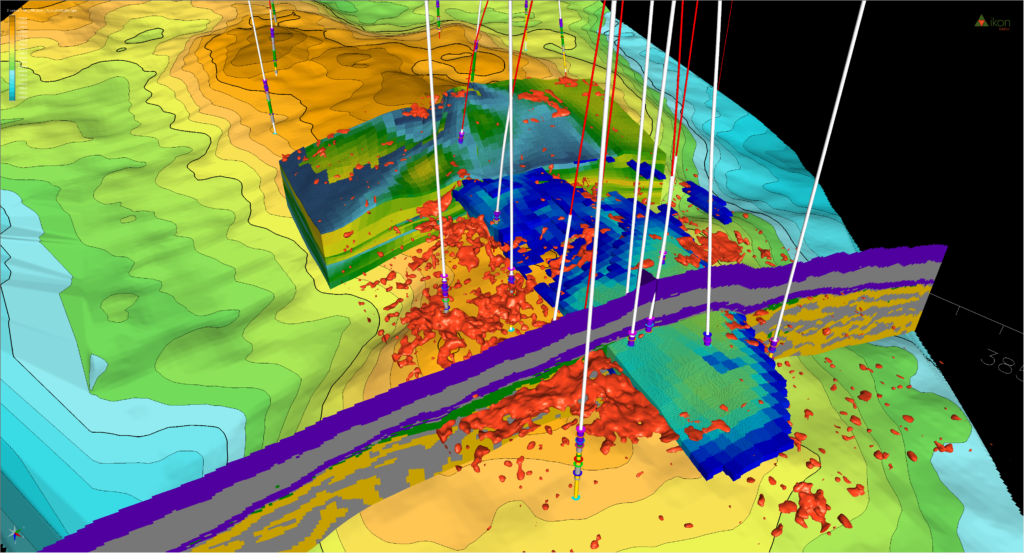What Is Reservoir Characterisation?

Estimated reading time: 5 minutes

<Regional Masterclass on Integrated Petrophysics For Reservoir Characterisation. Photo Credit: Ikonscience>
Robust reserves and simulation are achieved by the logical, systematic integration of all relevant data. A quality reservoir interpretation is extremely cost-effective compared with data acquisition or development mistakes and essential with today’s complex reservoirs and data sets.
Proper integration replaces the need to run expensive, irrelevant logs, explains apparent data conflicts and provides the correct answer faster, strengthening your position as an operator and competent petrophysicst. By contrast, stand-alone log analysis often results in wrong decisions and weakens your position in the eyes of your business partners and colleagues.
Understanding reservoirs empowers better optimize its lifetime performance. Doing that requires the most accurate measurements available from multiple sources and disciplines to prepare a superior quantitative representation of the reservoir.
Reservoir characterization is defined as the model that characterises the reservoirs based on its ability to store and produce hydrocarbons. They are used to indicate the reservoir fluids behaviour under different circumstances and to find the optimal production techniques that are able to maximise production. Hence, there are 9 main properties these studies hope to achieve through reservoir characterization. They are:
- Reservoir Fault System
- Trapping Mechanism
- Facies Changes
- Porosity Variation
- Permeability Variation
- Hydrocarbon Types and Contacts
- Limit of the Accumulation
- Hydrocarbon Saturation
- Hydrocarbon Volumes
Reservoir Fault System: To determine the fault framework is important to identify the kind of faults present, if the faults are sealed and the faults potential of compartmentalizing the reservoir.
Trapping Mechanism: To determine the type of trap; structural trap, stratigraphic trap or combination trap, as well as to define the trapping system. For example, anticlinal structure or a fault dependent closure.
Facies Changes: To define the environments of deposition and lithologic distribution within the reservoir. For example, determining the extent of the channel for a channel system or defining a sand and shale system based on the ability to distribute the lithology within the reservoir.
Porosity Variation: It is important to note the percentage of void within the reservoir and how the percentage vary within the reservoir. These voids determine the amount of space available for possible hydrocarbon variation.
Permeability Variation: This refers to the ease at which fluids can flow through the reservoir. It is important note how this varies within the reservoir as it affects the flow of hydrocarbon during production.
Hydrocarbon Types and Contacts: To identify the kinds of fluids and systems present in the reservoir such as oil, water and/or gas. It is also important to determine if there is hydrocarbon water contact or not and at what depth is the contact between the fluids.
Limit of the Accumulation: The hydrocarbon contact must be posted on an already contoured elevation map so as to determine the extent of the accumulation. This must be done while putting into consideration the type of trap and limits of the facies interpretation.
Hydrocarbon saturation across the reservoir: Hydrocarbon cannot replace 100% of water initially within the reservoir, it is therefore important to quantify the percentage of hydrocarbon in the pore spaces within the reservoir.
Hydrocarbon Volumes: An estimate of the hydrocarbon reserves within the reservoir must be computed to make economic decisions and plan for the development of the reservoirs.
To achieve all that is listed above, an integrated reservoir study is required because information from well logs, cores, seismic biostratigraphic data and analogue data form the foundation for interpreting the reservoir properties listed. Computers have made integration of the various data sets easy and one of the most important milestones in reservoir characterization is to build a 3D computer reservoir model that will represent the subsurface reservoir.
Regional Masterclass on Integrated Petrophysics For Reservoir Characterisation is a 3-day training course held from 16-18 December 2019 (Kuala Lumpur), designed to teach you how to evaluate reservoirs and quickly identify flawed results. This course, evolved over 25 years of petrophysical consulting and training, demonstrates how robust answers are achieved by the logical integration of diverse data. Pay and reserves are addressed first by Quick Look Log Analysis and then by a disciplined, logical process to optimize the interpretation of Porosity, Saturation, Permeability and Fluid Contacts – the basis of Reserves. Low Contrast Pay, clastics and carbonates are evaluated by straight forward integration techniques which outperform log analysis with direct, plain to see results. The integration of Mudlogs, LWD, Wireline, Facies / Rock Types, SCAL, NMR, Dielectric, MDTs and Well tests are explained via the author’s 28,000 core plug PetroDB-WEB software. Finally, the crucial Petrophysics to Geomodel checks are clearly set out.
 |
